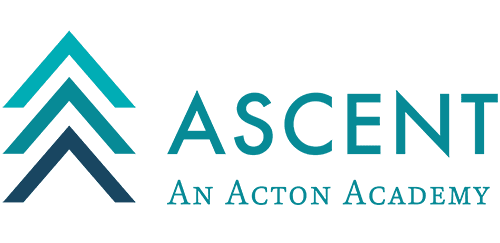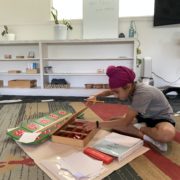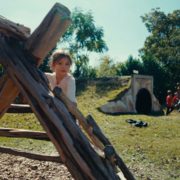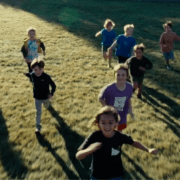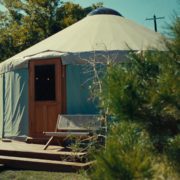Finding Balance in a Self-Paced Process
By Samantha Jansky and Janita Lavani
The ingredients of a healthy self-paced learning process can prove empowering and set learners up for success for life. However, there’s an element of balance required to pull them all together. Paradoxically, autonomy requires accountability, and flexibility requires structure. While it might seem as though these are in conflict, they work in tandem to give much needed balance to an individual’s learning process.
Autonomy, as you could have guessed, is at the core of self-paced learning. At Ascent, the learners determine for themselves how and when to approach their work. They do so when they are motivated through pursuing their curiosities, when they are equipped to engage freely in their environment and when they practice towards mastery. Learners are not bound by limits placed on them because of their age. They can go as far and beyond what is expected of them in a particular subject. They can also choose when to work on the material; perhaps they are someone who likes to focus on a certain subject for weeks at a time, or perhaps they like a little balance each day. Ultimately, it is up to them to decide how to approach their work.
The flexibility of self-paced learning plays into genuine autonomy. Learners practice adjusting timelines, revisiting concepts, and incorporating feedback, allowing them to navigate their learning journey with resilience and a growth mindset- it offers the opportunity to practice adaptability in the face of unforeseen challenges and push through when faced with resistance.
This flexibility, however, doesn’t imply a lack of structure or discipline; rather, it encourages individuals to take ownership of their learning journey and create the structure themselves through tools introduced to them (some examples include SMART Goals, the Urgent/Important Matrix, squad frameworks, the badge system to stay on track, etc). Self-paced learning means you work on each subject at your pace; slowing down when you need to grasp something, and accelerating once you’ve mastered a topic. Self-paced learning empowers individuals to keep moving forward.
One of the most important tools offered to learners in a self-paced environment is goal-setting; establishing realistic objectives and timelines to maintain a sense of purpose and direction. Goal-setting ensures that the learners stay focused, motivated, and accountable. In a learner-driven environment, the learners are accountable to their growth. A key difference between this and more traditional learning environments, is that a learner’s standing in any subject area is not compared to a predefined standard; rather their progress is measured against their past achievements and efforts. The practice of setting SMART (Specific, Measurable, Achievable, Relevant, Tough/Time-Bound), is critical in this regard. A true SMART goal is challenging. It pushes your limits to see what you can do- and it is built upon past progress and learning. This is where the rigor of a learner-driven environment comes into play.
Clear goals, accountability, and active engagement, create a tremendous amount of structure in a learner-driven environment- but it’s not “top down” structure created by someone else. When the learners have autonomy over their learning and their work output, they are the ones creating the structure they need to thrive, leading to a strong sense of responsibility.
Here’s a story that pulls all of this together. It’s one of many examples we have seen over the years of the magic of balancing autonomy with accountability and structure with flexibility.
It was a chilly February morning and one learner was celebrating. Running around the studio, she was ecstatic, “I got my level 2 Math badge, I got my math badge!” The other learners in the studio were not silent on the matter, either. Loud jubilation and high-fives took place all over the space. This young hero had finally found her stride in math- a process that included a lot of help but that was hers to own. For a couple years, she struggled to find flow in this particular subject. Her squad frequently supported her in goal setting, her guides engaged her with questions and challenged her to set tough goals and develop a regular practice. She had the tools, such as SMART goals, a watch that reminded her to take quick breaks before getting back to work, a badge system that offered extrinsic motivators in each subject area, and powerful online platforms. She had the support of her parents, who checked in with her frequently but who were also aware of when they needed to give her space- they also left her plenty of space to fail (and to own that, too). This recipe was one for success, but she needed time to find her stride- to accomplish big wins in math on her timeline, at her pace. This allowed her to build up confidence over time. She faced setbacks, and learned to lean on her support system when she got an answer wrong- asking for help when she needed it- and eventually built up the mental muscle she needed to resist the urge to give up when she got an answer wrong. After months of setting daily math goals to create a habit, having the discipline to tell friends she was working, using her watch, rewarding herself with reading after she finished her math goal, she created a structure that worked for her and found flexibility in her practice. She had full autonomy (no one was going to make her do her work) but was also accountable to her goals and to the people she pulled in for support. She felt pressure, but it was rooted in her self-paced strive towards mastery. Most importantly, she owned the whole process, all the ups and downs, and so in the end, she realized her potential all on her own.
Ditch “What Did You Do Today?”: 10 Qs to Ask Your Child!
Tired of the one-word answer to “What did you do today?” At Ascent, our learners are on epic journeys of discovery and collaboration. But how do we keep those rich conversations going beyond the studio walls? We asked our Parent community and here’s the secret weapon: Questions that spark curiosity and build meaningful connections!
10 Powerful Questions to Unlock Your Child’s World From our Ascent Academy Parents:
- “What’s the coolest thing you saw (or heard) today?” This open-ended prompt lets their imagination soar and sets the stage for exciting stories.
- “Laughter Alert! What made you crack up today?” Tap into their emotions and connect with their world on a playful level.
- “Lunchtime Spy Report: What was the most interesting thing someone was eating?” Hyper-specificity ignites their memory and sparks a conversation that goes beyond routine.
- “Quest Mastermind: What was the most interesting challenge in Quest this week? Was it something factual (a topic you learned about that made you curious), something interactive (like a challenging interaction that you heroically approached) or a challenging framework that pushed you into the bounds of your challenge zone?” Show interest in their specific Ascent experience and open the door to a conversation about their learning adventures.
- “Teamwork Makes the Dream Work: Who did you have the most fun working or playing with today? Who did you find encouraged you the most today? Who challenged you to be your best today?” These simple questions can lead to stories about collaboration, friendship, or even challenges they faced together.
- “Highlight Reel: Which part of your day do you tink you were the most focused? The most playful? The best peer? Tell me more.” Focus on the positive experiences and celebrate their victories, big or small.
- “Challenge Accepted: Did you do anything super fun or tricky today?” This lets them share achievements and interesting experiences that may not have come up otherwise.
- “Feel-Good Friday: How did school make you feel today: accomplished or lazy, proud or ashamed of your effort?” Go beyond facts and open the door to discussions about emotions and experiences they might not readily volunteer.
- “Bragging Rights: What are three things you absolutely rock at?” Encourage self-reflection and positive self-talk. Let them shine!
- “Story Swap! Want to hear about my day? I can go first…” Modeling detailed storytelling can inspire them to share more about their own day and create a space for open communication.
Remember:
The key is to listen actively and let their answers guide the conversation. These questions are just a springboard – get ready to be amazed by the incredible worlds your child explores!
The Power of Self-Paced Learning: A Roadmap to Agency
By Samantha Jansky and Janita Lavani
What images come to mind when you hear “self-paced learning?” Be honest with yourself. What feelings come up when you imagine your child in a self-paced learning environment? What about yourself as a child?
One key component to a Learner-Driven space is that each individual has the opportunity to work at their own pace. Not exclusive to Ascent, self-paced learning has emerged as a beacon of flexibility and autonomy. At Ascent, the self-paced nature of our learning design allows individuals to chart their educational journey.
There is a common misconception when it comes to self-paced learning that it somehow equates to a laissez-faire attitude towards work. For some, hearing “self-paced” can conjure up images of young people floundering, not working, and choosing to waste time, rather than working. In fact, it’s quite the opposite.
There are key ingredients to a healthy self-paced learning process that, when put together, create a runway for life-long learners to set out and change the world with agency, awareness and fulfillment. These include; autonomy, flexibility, practical tools, trust, accountability, and collaboration.
In our next few blog posts, we’ll explore the true dynamic nature of self-paced learning in our learner-driven environment and the structure in place to allow it to be harnessed as a powerful tool for deep, meaningful, limitless learning!
Embracing the Unfamiliar: A Tale of Kindness and Community
Guest parent: Loraine Björendahl | Interview by Javier Parellada
At Ascent Academy, we believe that fostering genuine connections is essential to the educational experience. It extends beyond mere friendliness; it’s about building a community where everyone feels truly seen, heard, and understood, a place where belonging is not just a feeling, but a reality.
Loraine’s story, one of a small interaction she was able to observe at drop off, beautifully illustrates this vision. As her twin sons embarked on the unfamiliar journey of transitioning to a new school, she witnessed firsthand the impact of a nurturing community on her children.
A Gentle Hand in a New World
As he stepped into this new chapter at Ascent, her son faced the natural challenges of adjusting to unfamiliar surroundings. It was in this moment of vulnerability that his peers, driven by an innate sense of empathy and care, became his unexpected guides. Without any prompt, children from his studio emerged from the studio and greeted him at the entrance, not with loud cheers, but with a shared, silent understanding that surrounded him with kindness. Through their gentle touches and soft words of encouragement, they welcomed him. As a group, they walked back inside the school and began their day. This moment, a perfect microcosm of the deep-rooted empathy and inclusivity that permeates the community, filled Loraine with profound gratitude.
A Community Woven with Authenticity and Respect
“What truly makes our community beautiful,” Loraine reflects, “is the genuine presence of everyone. We are actively involved in each other’s lives and in our children’s lives, without ever stifling individuality or personal growth. We respect everyone’s need for space, while still fostering a deep sense of connection and authenticity.”
These words capture the essence of what makes Ascent distinctive. It’s a space where active participation thrives alongside a profound respect for individual journeys. This delicate balance nurtures an environment where authentic connections can flourish, allowing everyone to feel valued, seen, empowered, and most importantly, embraced for who they truly are.
A Lasting Legacy: Beyond the Studio Walls
Loraine’s story serves as a testament to the transformative power of a nurturing and empathetic community. It’s a powerful reminder that the impact of belonging extends far beyond the studio walls, leaving a lasting legacy on the lives of children and adults alike.
Welcome to Ascent Insights
To all our curious community members, and to those simply curious, welcome to Ascent Insights!
We have the fortunate role of being witness to great leaps and bounds made by capable young people day in and day out. We get to see learners recognize the strength within, overcome their obstacles, and become self-reliant. From the subtle and mindful choices that demonstrate deep inner work, to the extrinsic accomplishments, we see genius every day. We recognize that we are at the forefront of the new world, forging foundations for learners who will be the creators of their stories and will recognize their gifts that will change the world.
As we continue forward on this evolving Journey, we continue to mark each layer of growth with deep observation, deep thought, and deep learning. Today, we stand between contemplation and anticipation as we launch this medium for sharing bits and pieces of our experiences and approach. For years we have been dedicated to nurturing this revolutionary, yet ancient, paradigm of offering young people the opportunity to connect to their inner genius.We look forward to the environment Ascent will continue to provide for this well into the future.
We have been privileged witnesses to transformational stories—each child’s, and each family’s Journey is a testament to the strength of this educational philosophy. Our vastly different backgrounds formed the foundation that allowed us to create spaces and experiences that demonstrate trust in young people.. Our shared experience at Acton Academy became more than a professional endeavor; it was a pivotal juncture to hone our skill sets and forecast further, daring to partner in co-founding Ascent.
With this blog, Ascent Insights, we extend an open invitation to you—curious parents and lifelong learners—to partake in our ongoing conversation. Together, we’ll dive into the heart of our educational philosophy, explore the narratives and concepts that shape us, and challenge each other with questions that push us to go deeper. . All in short spurts!
Welcome to Ascent Insights—your compass to navigating the rich landscape of learning with us.
